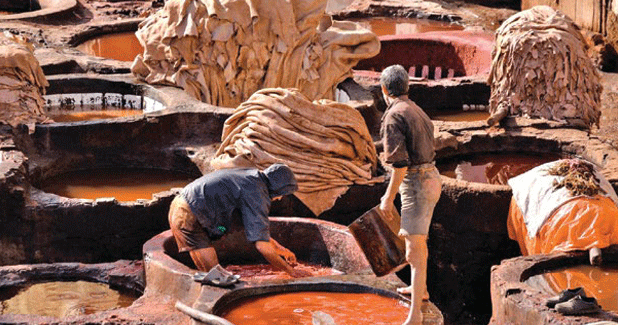
Demand side management in textiles in Bangladesh
Trade encouragement policies of the western countries, availability of cheap labour and low energy costs have provided Bangladesh with huge potential in the global clothing market, especially in EU and the US, feel Rakesh Kumar Goyal and Dr RP Agarwal
Trade encouragement policies of the western countries, availability of cheap labour and low energy costs have provided Bangladesh with huge potential in the global clothing market, especially in EU and the US, feel Rakesh Kumar Goyal and Dr RP Agarwal
Bangladesh´s textiles and garments industry contributes 13 per cent to the country´s total GDP. As one of the major sources of export earnings, this sector positions the country as the world´s second largest apparel exporter of western brands, after China.
Apart from the liberalisation initiated as a policy measure by the Government, two main reasons behind the phenomenal growth in this sector are: availability of cheap labour and low energy costs. Labour costs are only $0.23/hr whereas, in India, Pakistan and China the labour costs are $0.43/hr, $0.41/hr and $0.89/hr, respectively. Natural gas energy costs in Bangladesh are less than $0.02/kWh in comparison to $0.933/kWh, $0.672 and $0.784/kWh in India, Pakistan and China, respectively. Environmental and safety compliance has just started to gain attention, and past periods of growth can also be attributed to the moderate standards set for labour safety and environmental compliance.
Continued growth in this sector has also been facilitated by the trade encouragement policies of the western countries such as the WTO Agreement on Textiles and Clothing (ATC), Everything but Arms (EBA), Generalised System of Privilege (GSP) in the EU countries and The US 2009 Tariff Relief Assistance. These policies have provided Bangladesh with huge potential in the global clothing market, especially in the EU and America.
Types of industries
The sector is mostly comprised of manufacturing in two major areas:
Textile: In the textile sector, the major industry is ready made garments (RMG). As of 2012 there were 5,400 garment factories in Bangladesh (see Figure 3 for past growth). The country has projected that the sector´s contribution will grow to $34.5 billion by 2015, adding 20.5 per cent to the total GDP. Bangladesh is the second largest garment exporter in the world and the industry plays a significant role in the country´s total exports. Leather industry: The leather sector is the fourth largest export sector by earnings, after ready made garments, jute and frozen food, contributing 1.54 per cent of total exports. The skin and hides of the country´s vast domestic livestock population, which are used as raw materials, and the low cost of available skilled labor are the two natural competitive advantages that the leather industry of Bangladesh has as compared to other countries. The annual supply of hides and skins in the country is about 300 million sq ft consisting of 63.98 per cent cow hides, 2.19 per cent buffalo hides, 32.74 per cent goat skins and 1.09 per cent sheep skins.
End Products
Textiles: As per BTMA data of registered firms, the textiles industry in Bangladesh produces:
1.Yarn: There are a total of 373 different yarn manufacturing unit´s ´ 97 ring spinning units, 195 ring spinning with open-end capacity, about 51 rotor/open-end, and around 30 synthetic yarn mills. These units amount to a total production capacity of 17 billion tonnes of yarn.
2.Fabric: There are total of 743 fabric manufacturing units producing woven, denim, home textiles and knit fabrics. Total production capacity is around 2 billion metres of fabric.
3.Dyeing/printing/finishing: There are around 238 dyeing/printing/finishing mills.
Leather: The leather industry constitutes two major end products apart from tanning industries: 1.Footwear industry: There are about 40 mechanised footwear industries and about 4,500 small and cottage units producing various types of footwear with a production capacity of a




